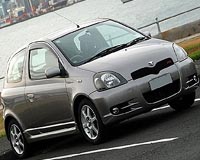 |
Bonn, Germany (SPX) Mar 16, 2011 The breakthrough with electric cars is a long time coming - not least on account of their key component, the battery. Lithium-ion batteries are still too expensive and their range too limited. New materials should pave the way for better batteries. Simulation software from researchers is helping speed up the development process. Electric cars are the future - a view shared by government and the automotive industry alike. The German federal government aims to establish Germany as the lead market for electromobility. By 2020, a million passenger cars with an electric drive should be on the roads in Germany. The prospects of achieving that aim look good: As the ADAC, the German motoring organization, found out in a survey, 74 percent of those surveyed would buy an electric car if they did not have to compromise in terms of cost, comfort and safety. Consumers are not willing to compromise one iota when it comes to range. Around one third of drivers are looking for a range of at least 500 kilometers. And here is the crux: A lack of charging stations and limited battery life have so far prevented compact electric vehicles from going mainstream. The lithium-ion batteries used by most automakers are simply too heavy, too expensive and go flat too quickly. New materials should improve the performance, service life and safety of the energy storage device, yet the development of these kinds of materials is time-consuming and costly. In the Fraunhofer System Research for Electromobility (FSEM) project, researchers from the Fraunhofer Institute for Industrial Mathematics ITWM in Kaiserslautern are developing software to simulate lithium-ion batteries, which should in turn speed up this process and make it more efficient. The new software is dubbed BEST, short for Battery and Electrochemistry Simulation Tool. A lithium-ion battery consists of two porous electrodes kept apart by a separator filled with electrolyte. Lithium ions flow between the electrodes when the battery is charged and discharged. "Battery performance depends on the materials used in the components. These materials need to work in harmony with each other," explains Jochen Zausch, a scientist in the Complex Fluids group at Fraunhofer ITWM. "Various material combinations can be simulated using our software, enabling us to come up with the ideal mix. The kind of trial-and-error testing done in the past is no longer necessary." The Fraunhofer ITWM researchers have managed to simulate on macroscopic and microscopic level the entire battery cell as well as the transport and reaction processes of the lithium ions themselves. "We can show the microscopic structure of the electrodes. Every individual pore measuring 10 micrometers can be seen - something none of today's off-the-shelf programs can do. The position and shape of the electrodes can also be varied," says Zausch. By resolving the structure of the electrodes in three dimensions, parameters such as lithium ion concentrations and current density can be calculated. For these computations a specializes "Finite Volume" code is used that was developed and implemented at the ITWM. The distribution of the current flow provides an indication of heat production in the battery. Therefore, the software can pinpoint possible hotspots that may overheat and can lead to ignition of the battery. Aging effects can also be assessed using BEST. After all, temperature development within the battery affects its service life. The scientists intend to upgrade the program to include aging models which would make these kinds of studies even easier to conduct. "Ultimately, BEST should help both automakers and manufacturers of electric storage devices to build robust, safe batteries with greater range and, at the same time, improved acceleration," says Zausch in conclusion.
Share This Article With Planet Earth
Related Links Fraunhofer Institute for Industrial Mathematics ITWM Car Technology at SpaceMart.com
 Japan quake to hit supplies of popular cars in US
Japan quake to hit supplies of popular cars in USChicago (AFP) March 15, 2011 Some popular Japanese cars could be in short supply in the United States as Japanese automakers tailed back production in both countries in the wake of Friday's devastating earthquake, analysts said Tuesday. Supplies especially of hybrid and small, fuel-efficient cars could tighten with Japan's shipping infrastructure hobbled and electric power to factories reduced after the earthquake and s ... read more |
|
| The content herein, unless otherwise known to be public domain, are Copyright 1995-2010 - SpaceDaily. AFP and UPI Wire Stories are copyright Agence France-Presse and United Press International. ESA Portal Reports are copyright European Space Agency. All NASA sourced material is public domain. Additional copyrights may apply in whole or part to other bona fide parties. Advertising does not imply endorsement,agreement or approval of any opinions, statements or information provided by SpaceDaily on any Web page published or hosted by SpaceDaily. Privacy Statement |